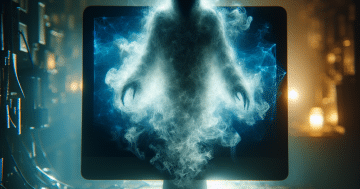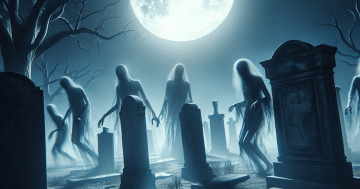Reformation Day, observed on October 31st, marks a significant moment in history when Martin Luther famously nailed his 95 Theses to the church door in Wittenberg. But what if this day were not just a celebratory remembrance, but a portal to the unknown? As the ghosts of history unfurl their spectral tales, we delve into the darkened corners of Reformation Day, where the echoes of the past might not be as benign as they seem.As dusk settles on October 31st, the air thickens with both excitement and dread. Children dress as ghouls and specters to roam the streets, but the true spirits that linger are far older than the costumes they wear. Many believe the night is best suited for ghostly tales and whispers of the lost. Legend has it that on Reformation Day, the souls of those lost to the tumultuous changes in the church’s history awaken, restless and reeling from centuries of unfulfilled desires.One chilling account from an old church depicts a ghostly figure believed to be none other than Martin Luther himself. It is said that on this fateful night, he wanders through the ancient pews, a soul bound to the earth by the weight of divine responsibility. Those who enter the church seeking solace have described feeling an unsettling chill as if a presence is watching them, waiting for them to make the wrong move on this particular night.But the hauntings do not end there. In many towns across Germany, Reformation Day memorials often become sites of paranormal activity. Visitors have reported seeing shadows darting behind stained glass and hearing whispers of long-forgotten hymns. From a distance, one may see flickering lights in the windows of ancient churches, remnants of a time when faith was a matter of life and death. For many, the merging of history and spirits creates an eerie feeling, as if the very essence of faith contains a price that was never truly paid.Additionally, some folklore emphasizes how transformed souls congregate on October 31st. Believers tell of chosen individuals who, upon entering the church on this hallowed night, are said to receive visits from relatives long departed. A soft caress or a fleeting echo might guide them, urging the living to uncover uncomfortable truths hidden in family history, perhaps entwined in the Reformation turmoil. These encounters lead the unsuspecting into surreal explorations that bridge generations, creating a connection that is both alarming and awe-inspiring.As the clock strikes midnight on Reformation Day, a rumored curse pulls the unwary into a realm where the past collides with the present. Along the spectral pathways of these haunting stories lies a chilling reminder that the spirits of reformers and believers alike remain entwined with the faith’s evolution. They linger, perhaps waiting for the moment when their sacrifices can be honored, but often leaving behind lingering shadows, fears, and unanswered questions. This blend of history and the supernatural renders Reformation Day not just a day of reflection and remembrance; it becomes a chilling reminder that the past, with all its complexities, is never truly dead. As we honor the transformative spirit of this day, we must also confront the shadows it casts.
Related Posts
The Haunting of Faker: Ghosts from the Digital Abyss
In the shadows of the digital world, a new fear lurks. […]
ghoststory
01/11/2025Sudden Death Syndrome: Tales from the Beyond
Sudden Death Syndrome is a phrase that resonates with m […]
ghoststory
01/11/2025The Haunting Updates of Animal Crossing: A Chilling Tale
In the vibrant world of Animal Crossing, players often […]


